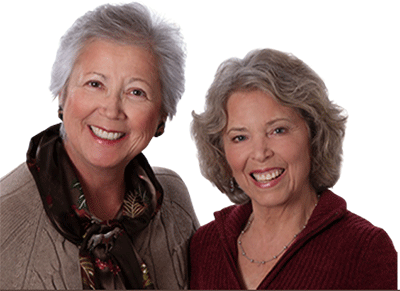The Storm of Grief
By Sheryl PaulMay 18, 2013
What a different world we would live in if everyone allowed themselves to have a daily cry!
 It’s a constellation of events and inner experiences that coalesce to create the perfect emotional storm that can only end in a release of grief, which is what happened a few weeks ago. My husband and I were struggling through a difficult conversation, I was tired, hormonal, and who-knows-what-else, and all of a sudden I felt a great swell of grief sitting in my chest, needing to come out. The next thing I knew I was crying hard. He held me as the grief shook my body. He asked why I was crying and I could only respond with, “I don’t know.” I didn’t know. And It didn’t matter. It had to do with the conversation but it didn’t. It had to do with the anniversary of my grandmother’s death and it didn’t. A gathering of grief had accumulated inside my body and it needed the safe space of my husband’s arms to let it out.
It’s a constellation of events and inner experiences that coalesce to create the perfect emotional storm that can only end in a release of grief, which is what happened a few weeks ago. My husband and I were struggling through a difficult conversation, I was tired, hormonal, and who-knows-what-else, and all of a sudden I felt a great swell of grief sitting in my chest, needing to come out. The next thing I knew I was crying hard. He held me as the grief shook my body. He asked why I was crying and I could only respond with, “I don’t know.” I didn’t know. And It didn’t matter. It had to do with the conversation but it didn’t. It had to do with the anniversary of my grandmother’s death and it didn’t. A gathering of grief had accumulated inside my body and it needed the safe space of my husband’s arms to let it out.
I cry less since becoming a mother almost nine years ago than I ever have in my life. Not that it’s necessarily healthy, but my time and attention are focused on my kids and work and that leaves little time for emotional breakdowns. As my kids get older and me-time opens back up, I’m finding that the tears that have been pushed down for nine years are re-emerging. And it feels so good, essential. My face looks different the morning after I’ve cried: puffier, yes, but also softer. The release of grief is the wave that crashes over the jagged rocks of psyche, softening the rough edges and allowing me to come back into my body. The release of grief clears out the fog of thoughts and causes me to see the world and my life with clarity.
Grief is a part of life. It’s a part of being a child and it’s a part of becoming an adult. We grieve when we grow up, when we leave childhood behind, the crumbling of innocence that happens when we step into the shoes of full-fledged adulthood. We grieve when our parents are still together and we have to loosen those ties to our childhood house and unit; we grieve when they’ve separated and the family home no longer exists. We grieve when we lose a loved one, a friend, a city, a job, a beloved pet. We grieve for the passage of of time, changes, endings. We grieve because we’re human and when we open our hearts to humanity, we find great beauty as well as great grief.
Our habitual response to grief is to resist. Part of this is a normal, human/animal response to push away anything painful: the starfish that contracts when we touch it. Part of it is a result of growing up in a parenting and educational culture that doesn’t know how to give loving attention to big feelings. We resist the grief yet there’s something so sweet that occurs when we finally surrender to the center of the storm. Like the eye of the hurricane, there’s a stillness in grief, an exhale. And when the storm has passed, when your body stops shaking, when the sob has been released from your chest and throat, there’s a peacefulness.
When I’m talking to my clients about grief and how necessary it is to make time and space, to slow down enough to release, I mention the movie, Broadcast News, in which Holly Hunter plays a television news producer who has daily emotional breakdowns. If I remember the film correctly, she actually schedules time for these breakdowns, knowing how essential they are to her capacity to continue in her high-stress job. So every day around 11am she steps out the back door of the building, sits down on the fire escape steps, and cries. She cries and cries and cries – full release – then stands up, wipes her face, dusts off her clothes, and resumes her work.
Can you imagine how different your life would be if, in addition to coffee breaks and lunch meetings, you also took time for crying breaks? Can you imagine what it would feel like to commit to a daily practice of attending to your emotional life where you allow whatever needed to move through you to move through? Anxiety and panic are often manifestations of bottled up feelings, a lifetime of anger, frustration, heartbreak, sadness, and fear pushed down because there was no space for them as a child or your caregivers didn’t know how to attend to these big feelings. The healing process as an adult must include time and space to attend to those big feelings in smaller eruptions so that they don’t rumble into volcanic proportions.
 Send this article to a friend
Send this article to a friend  Print this article
Print this article  Bookmarked 0 time(s)
Bookmarked 0 time(s)
| Related Articles |
|---|
| The Deep Grief of Unloving Actions |
| Sanctuaries for Grief and Heartbreak |
| Healthy Grief, Unhealthy Grief |
| Grief Busters |
Comments
| Author | Comment | Date |
|---|---|---|
| Join the Inner Bonding Community to add your comment to articles and see the comments of others... | ||

Daily Inspiration
Most of our judgments of others are projections of our own inner upsets and self-judgments. Notice your judgments toward others. How are they projections of your own inner insecurities and fears?
By Dr. Margaret Paul

 Share with Del.icio.us
Share with Del.icio.us Share with Digg
Share with Digg







